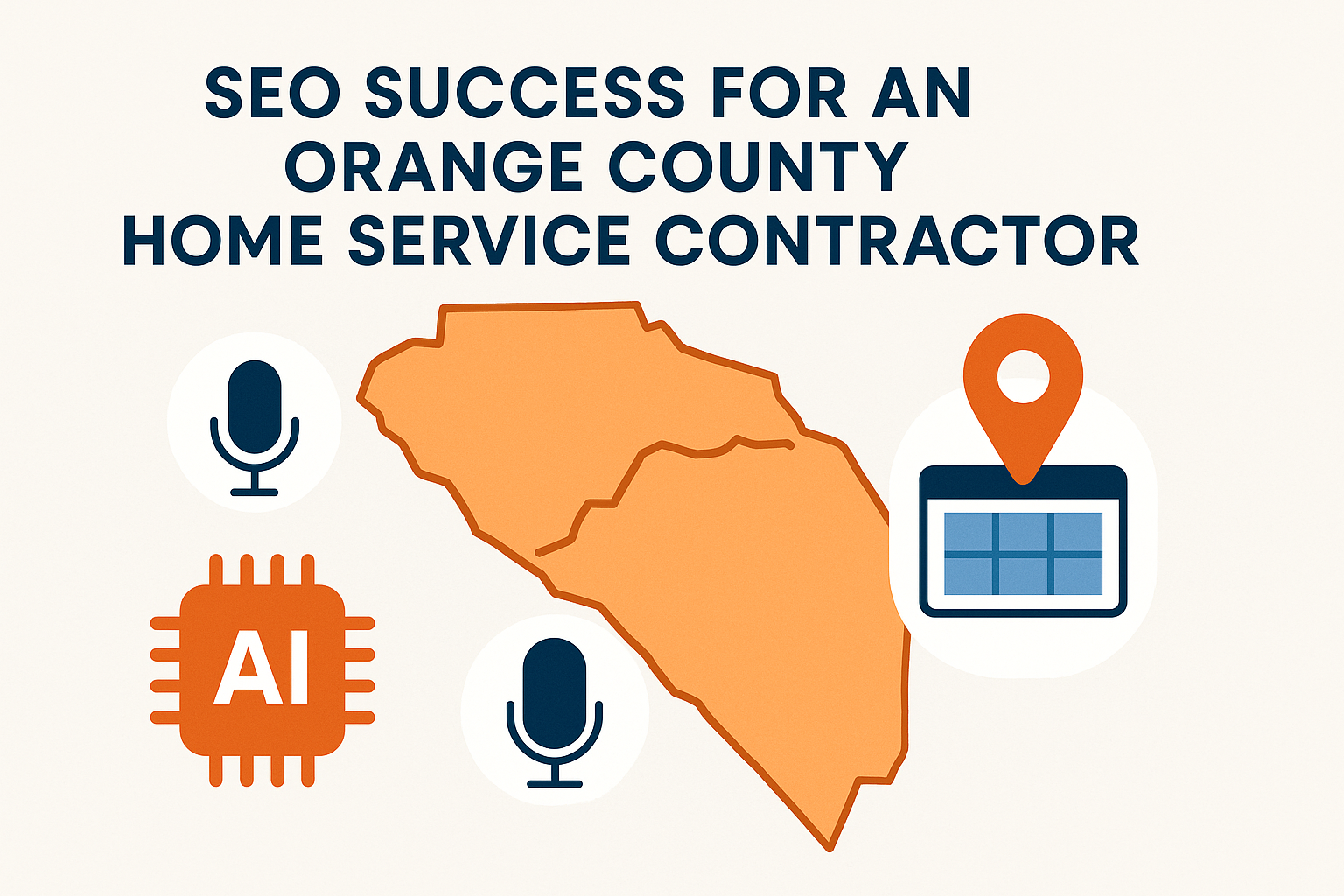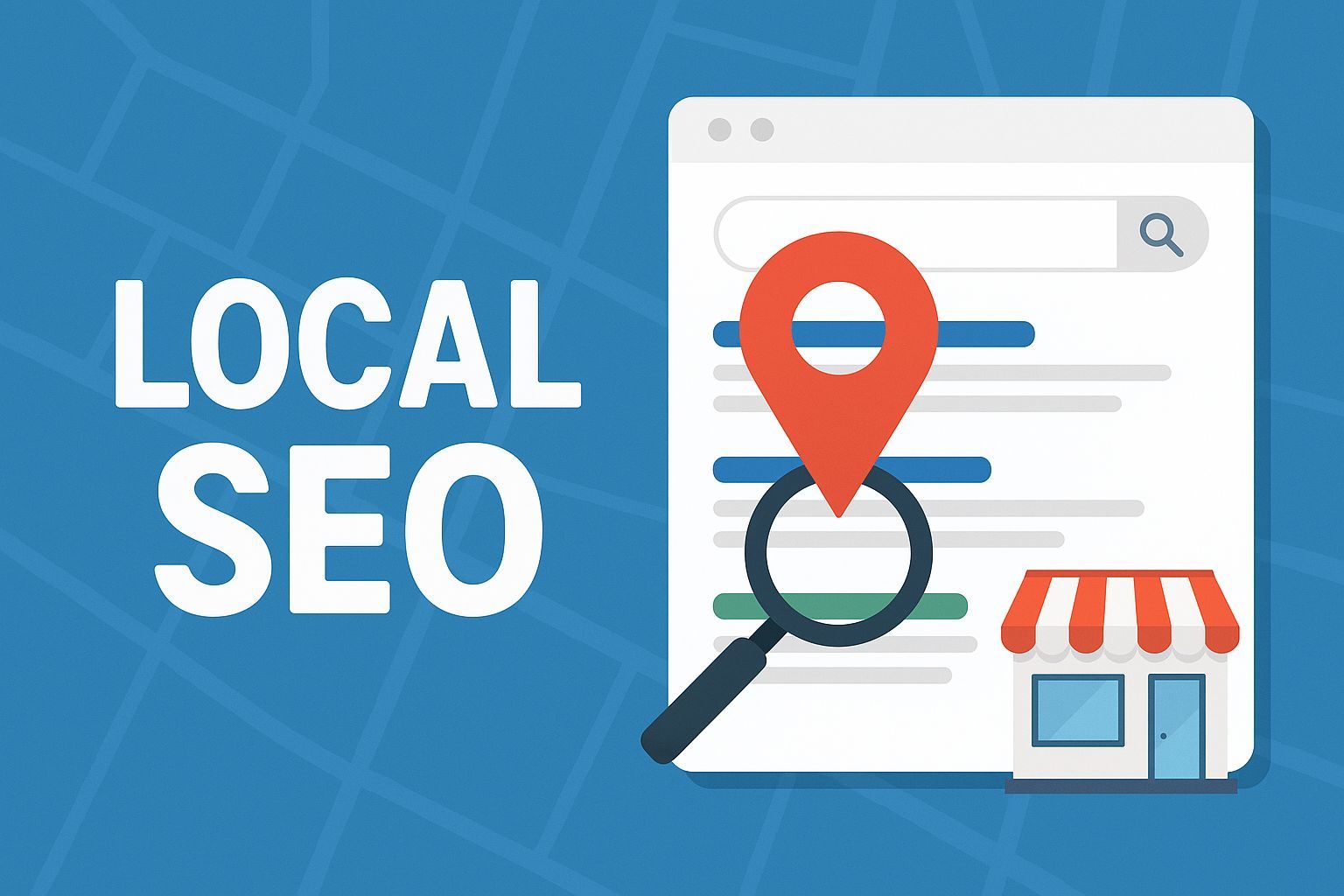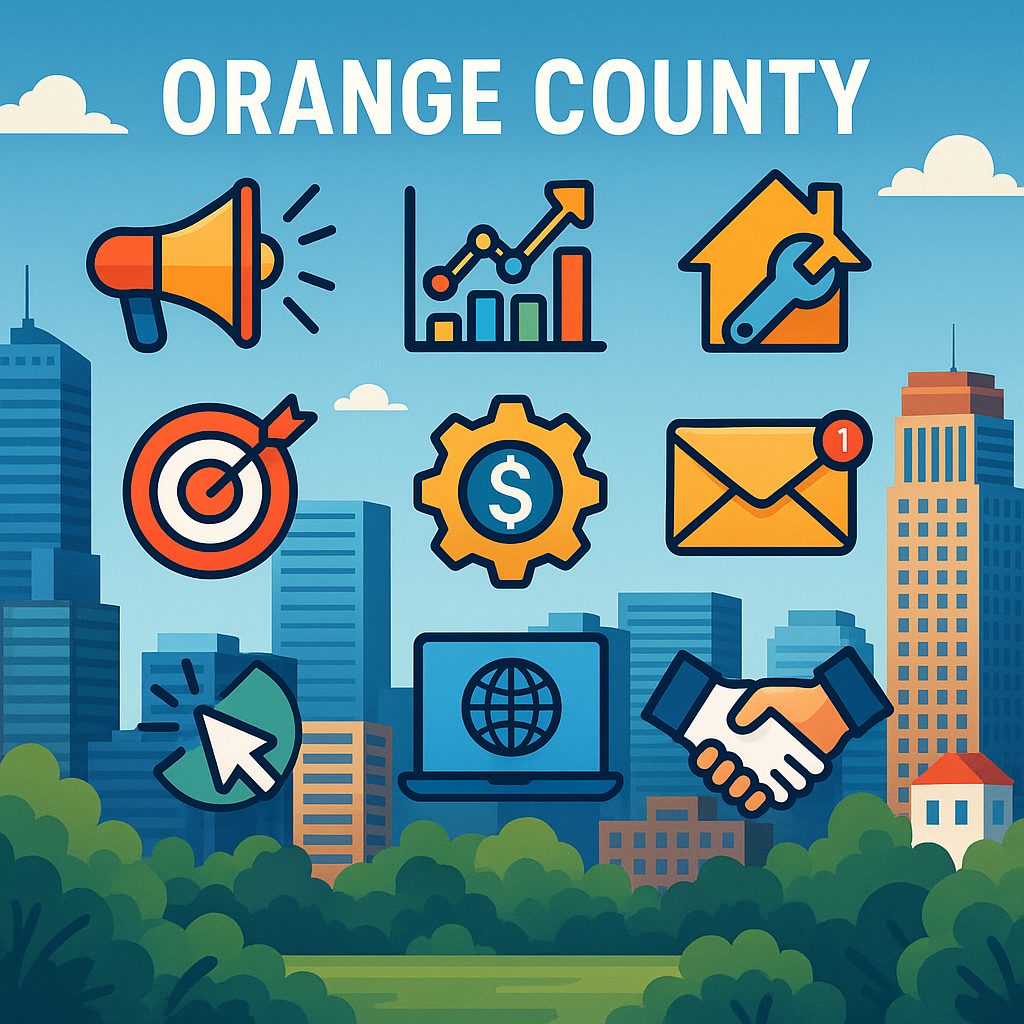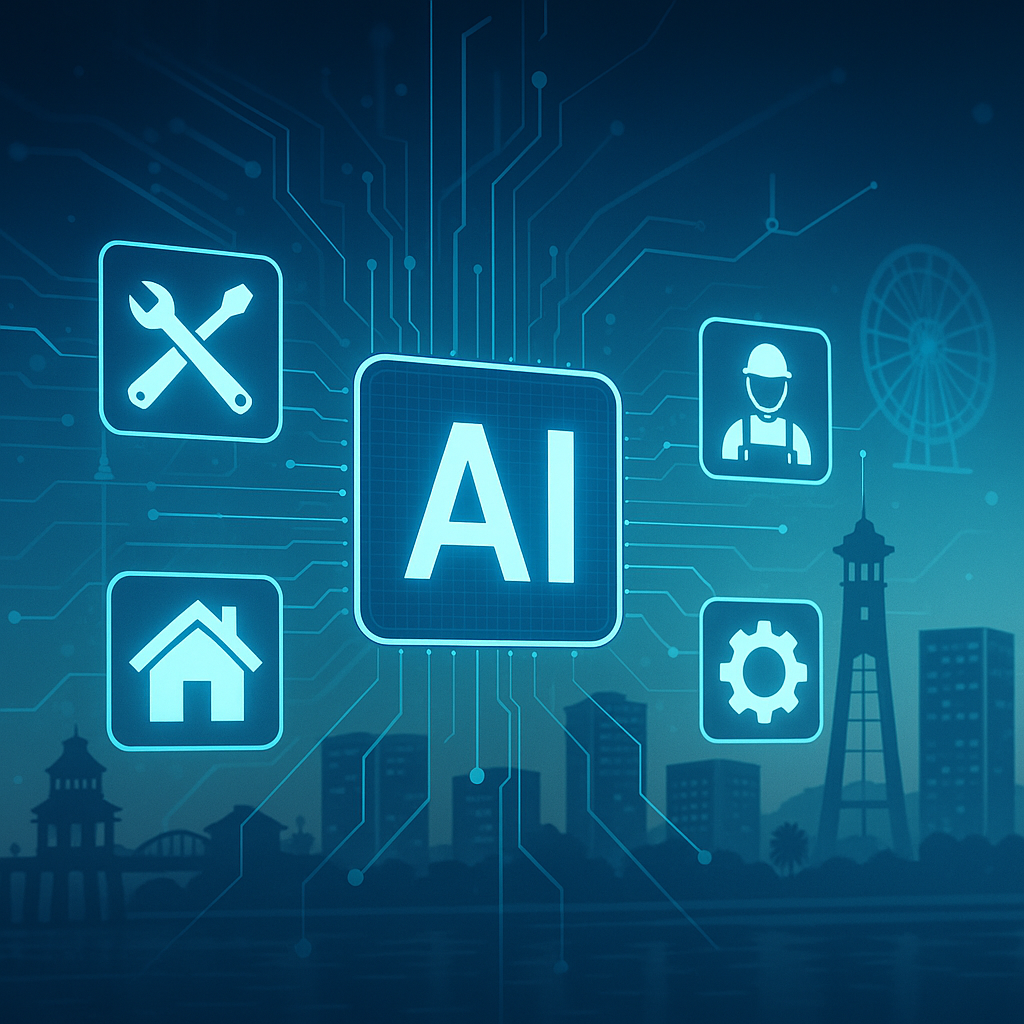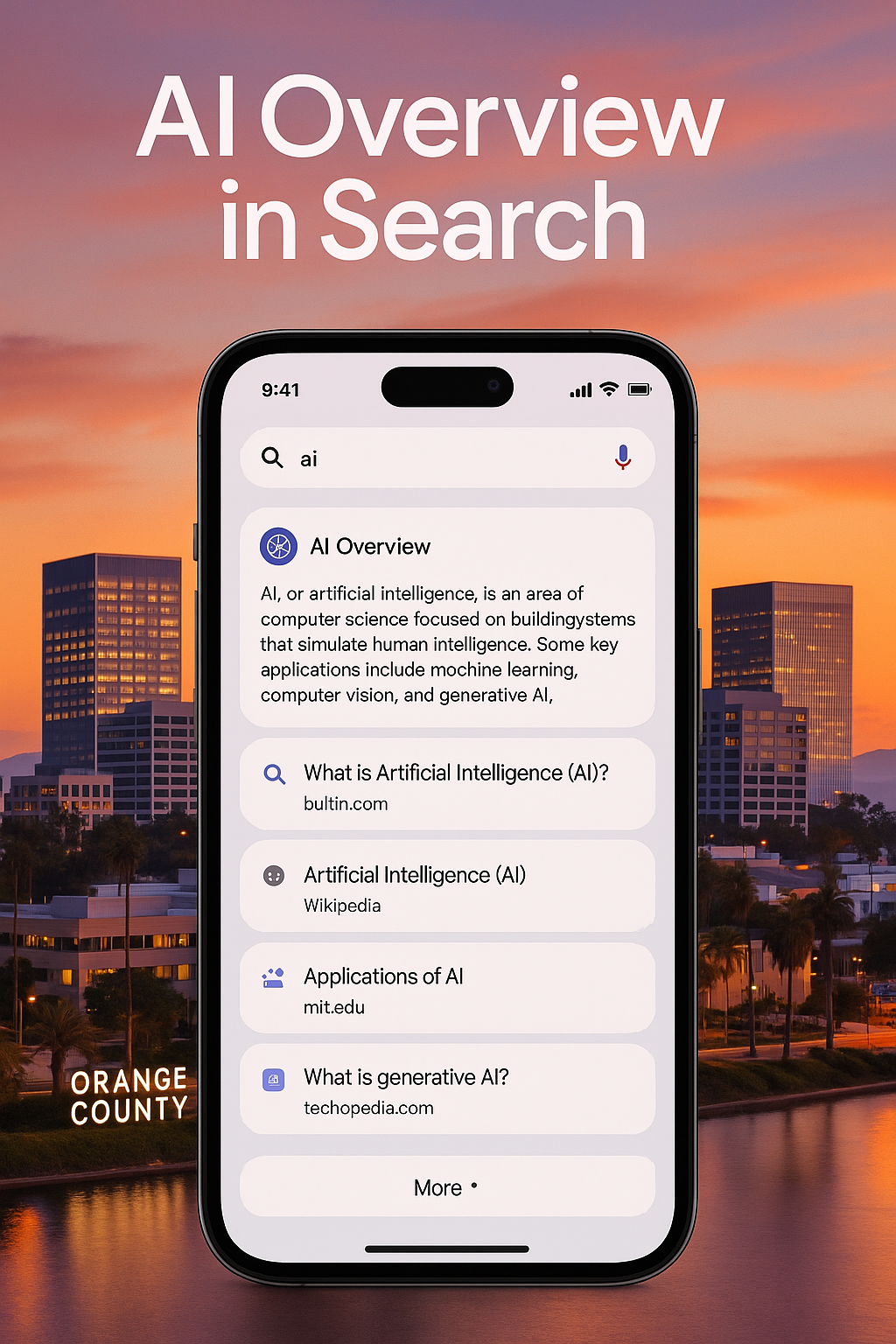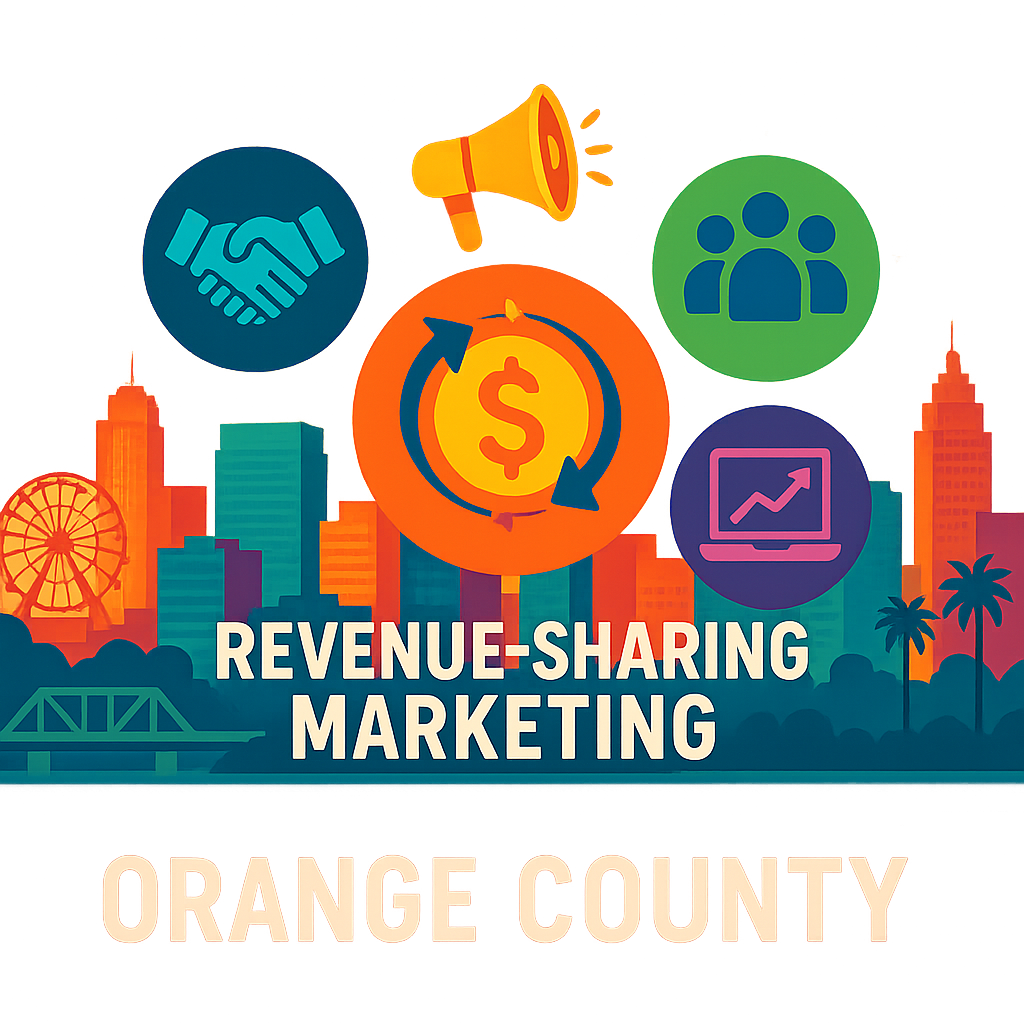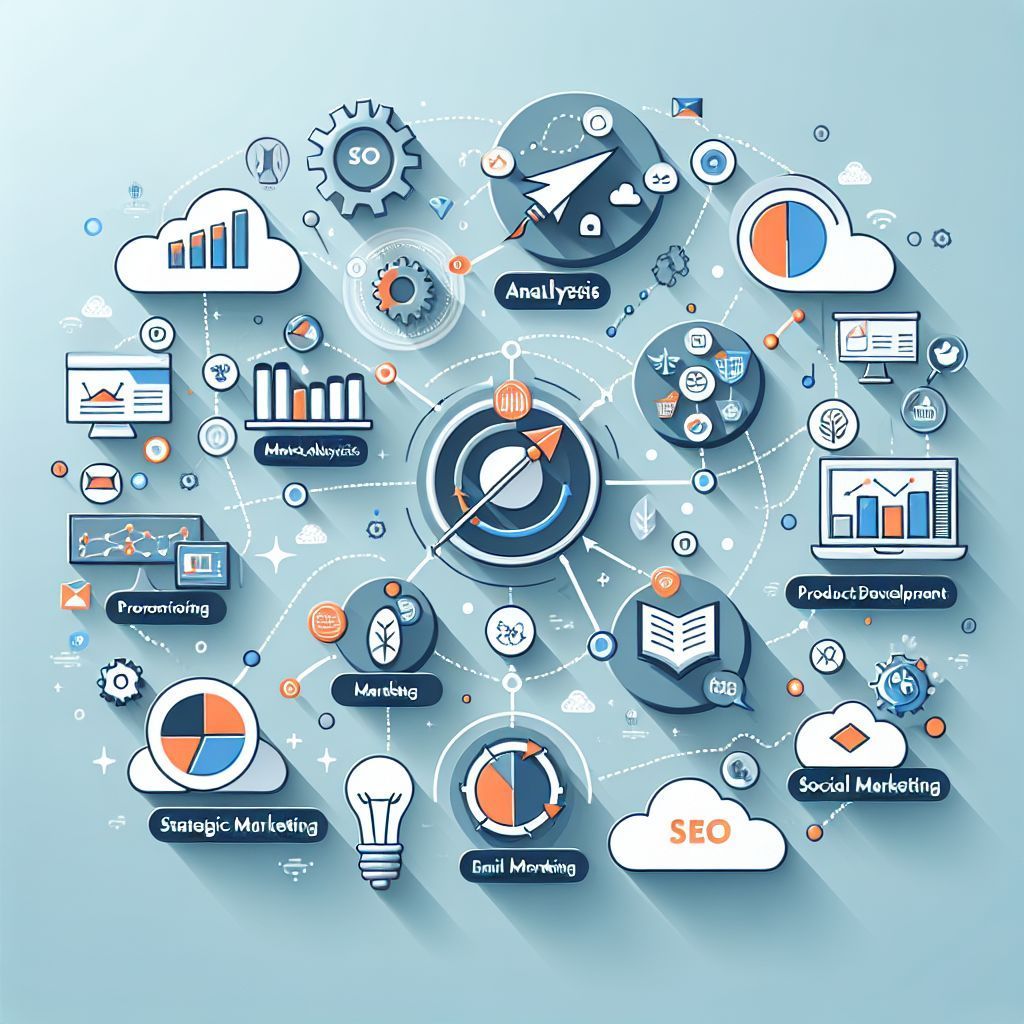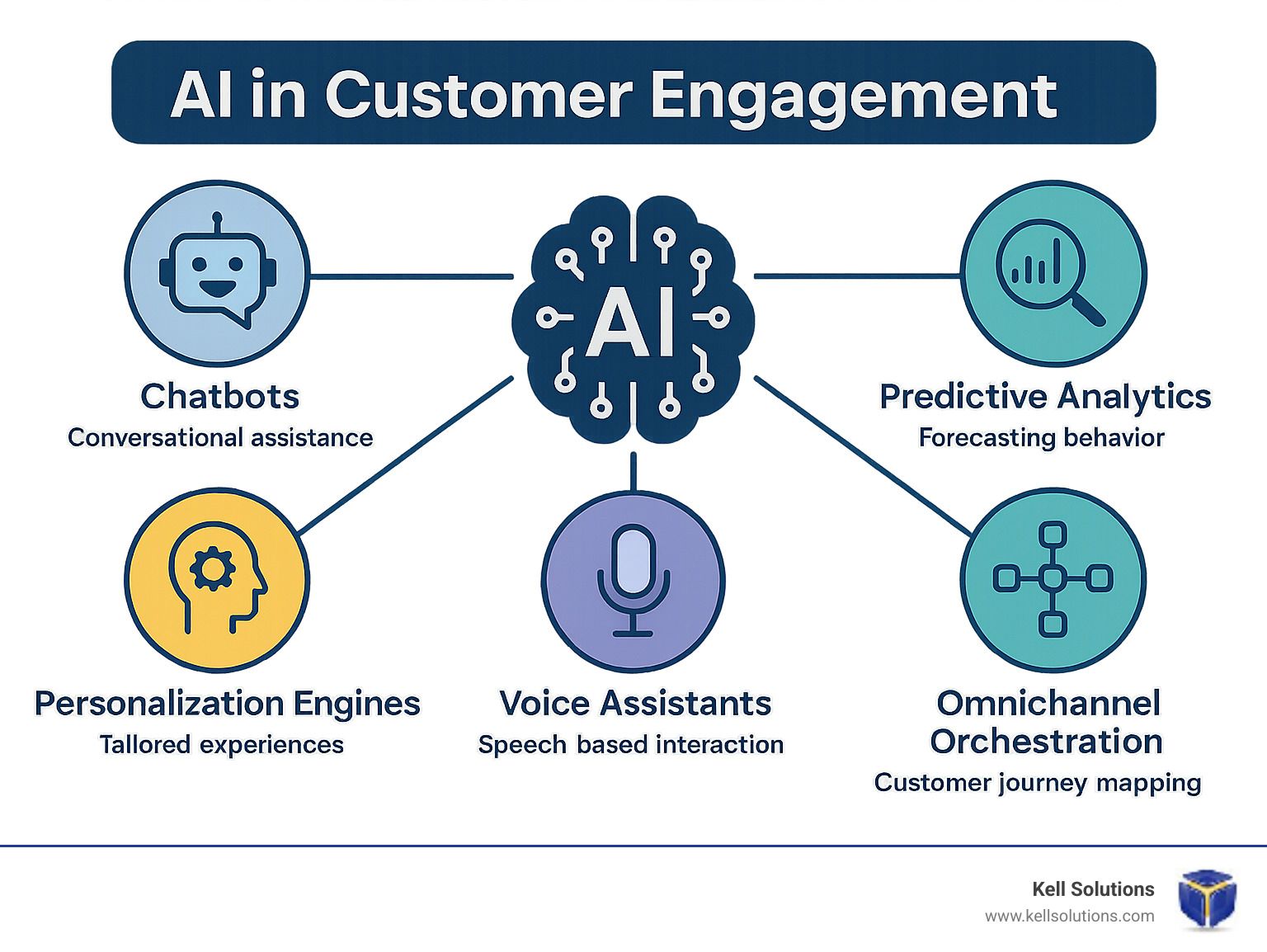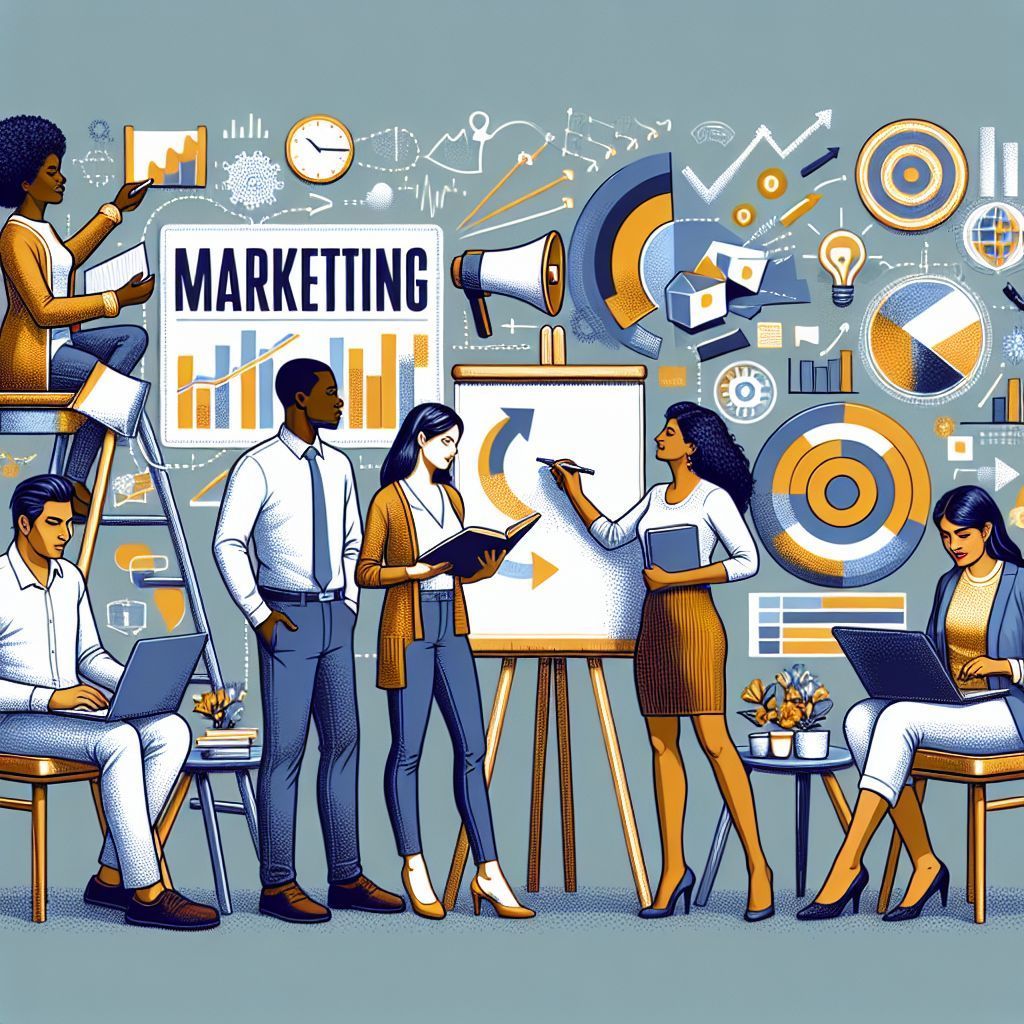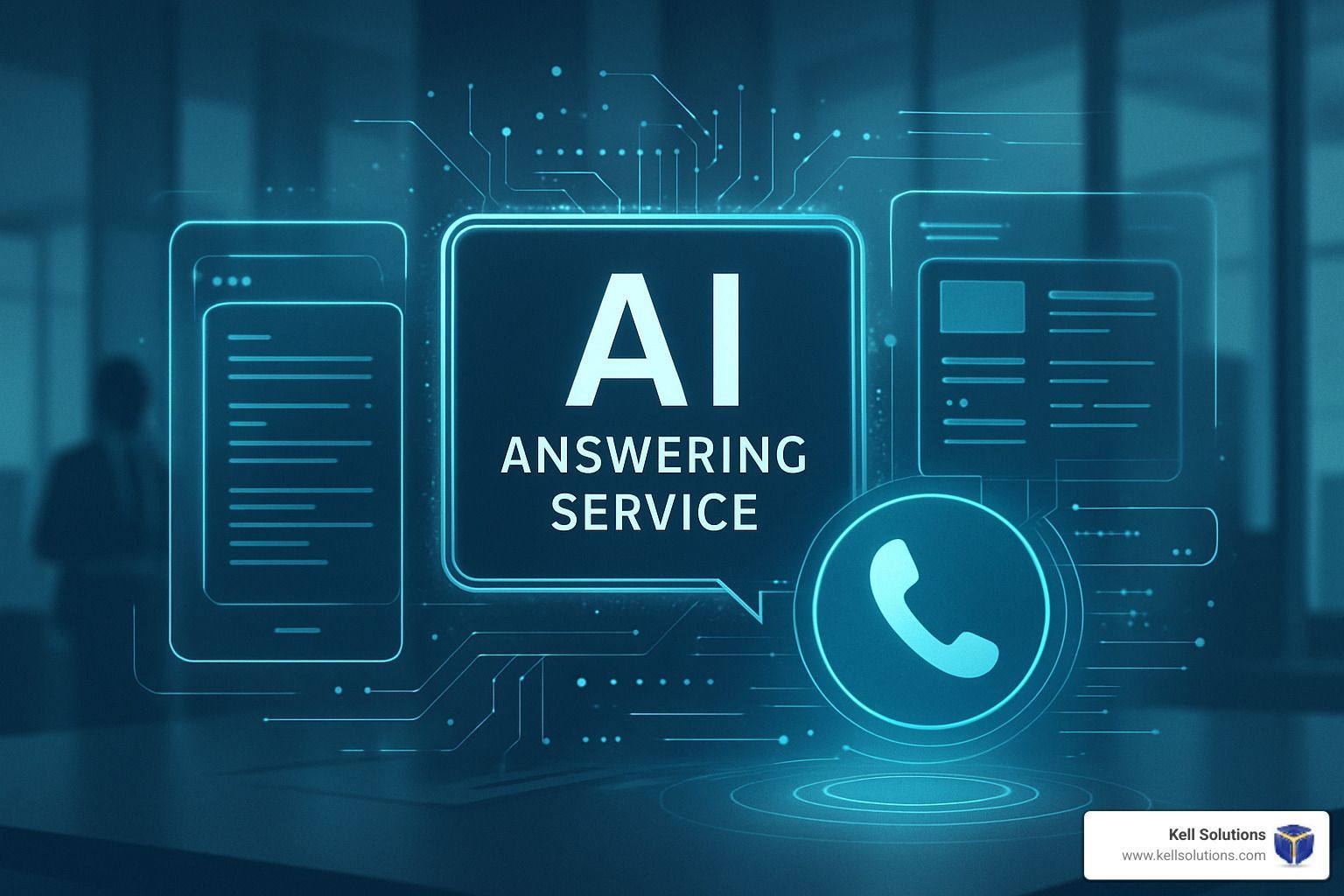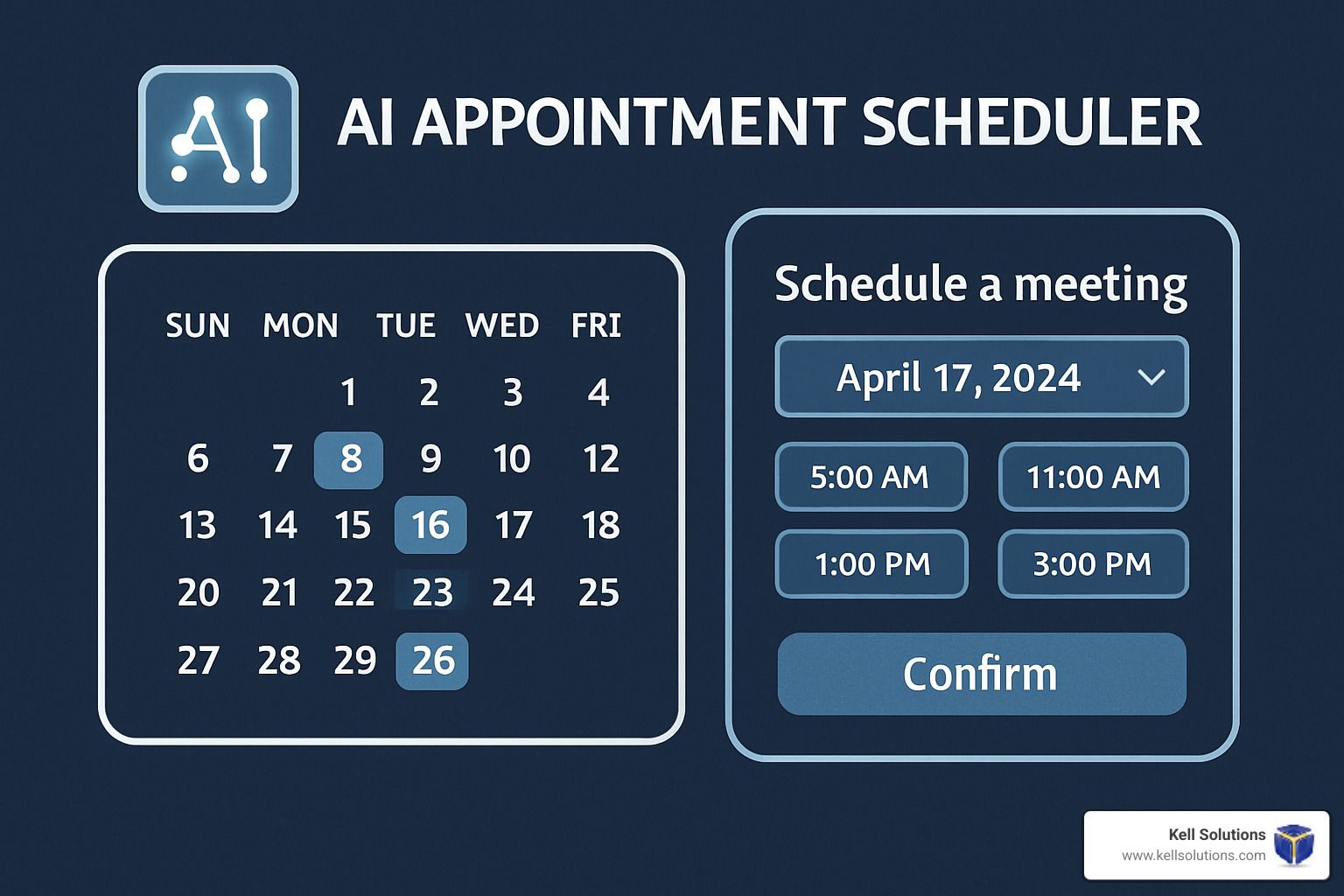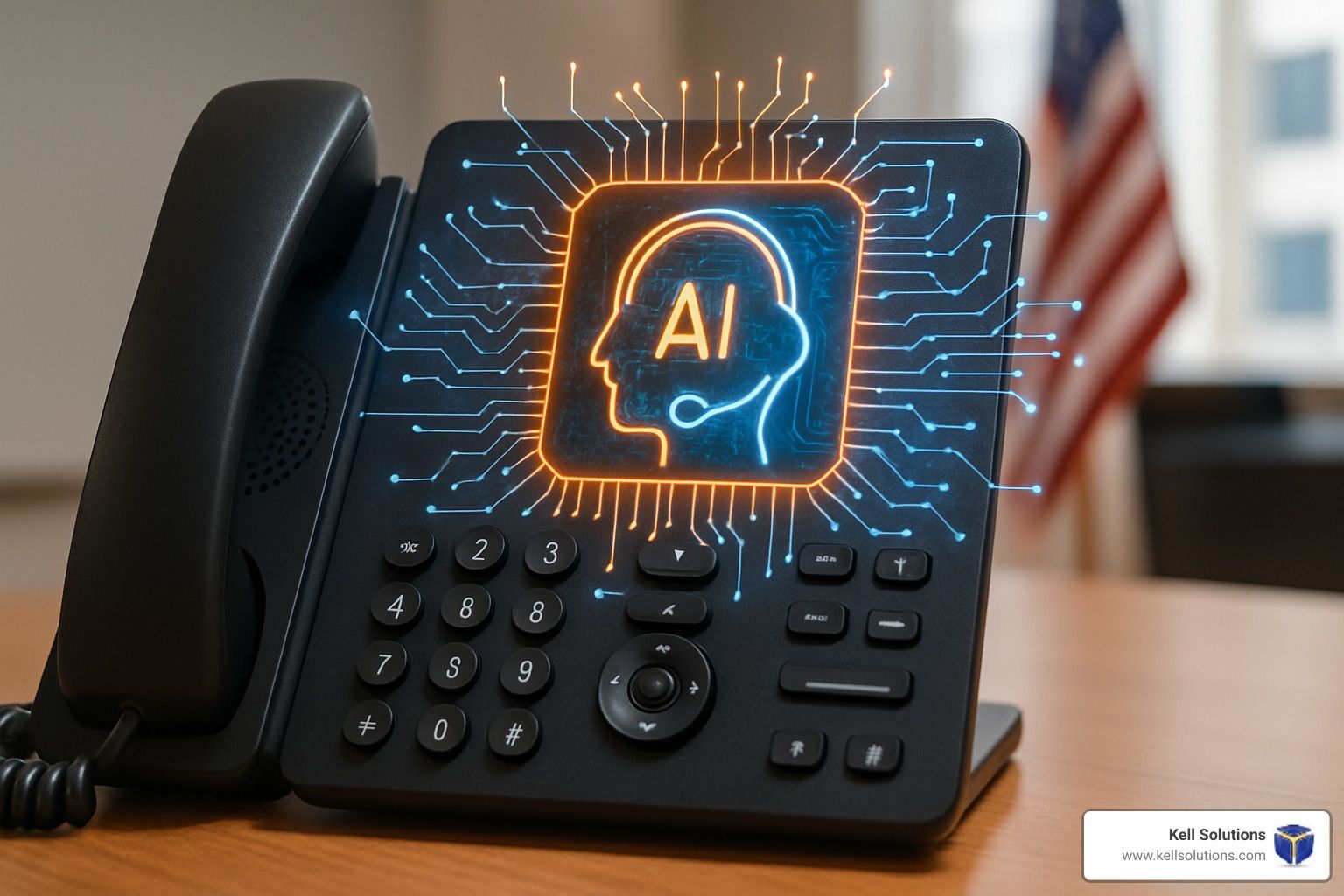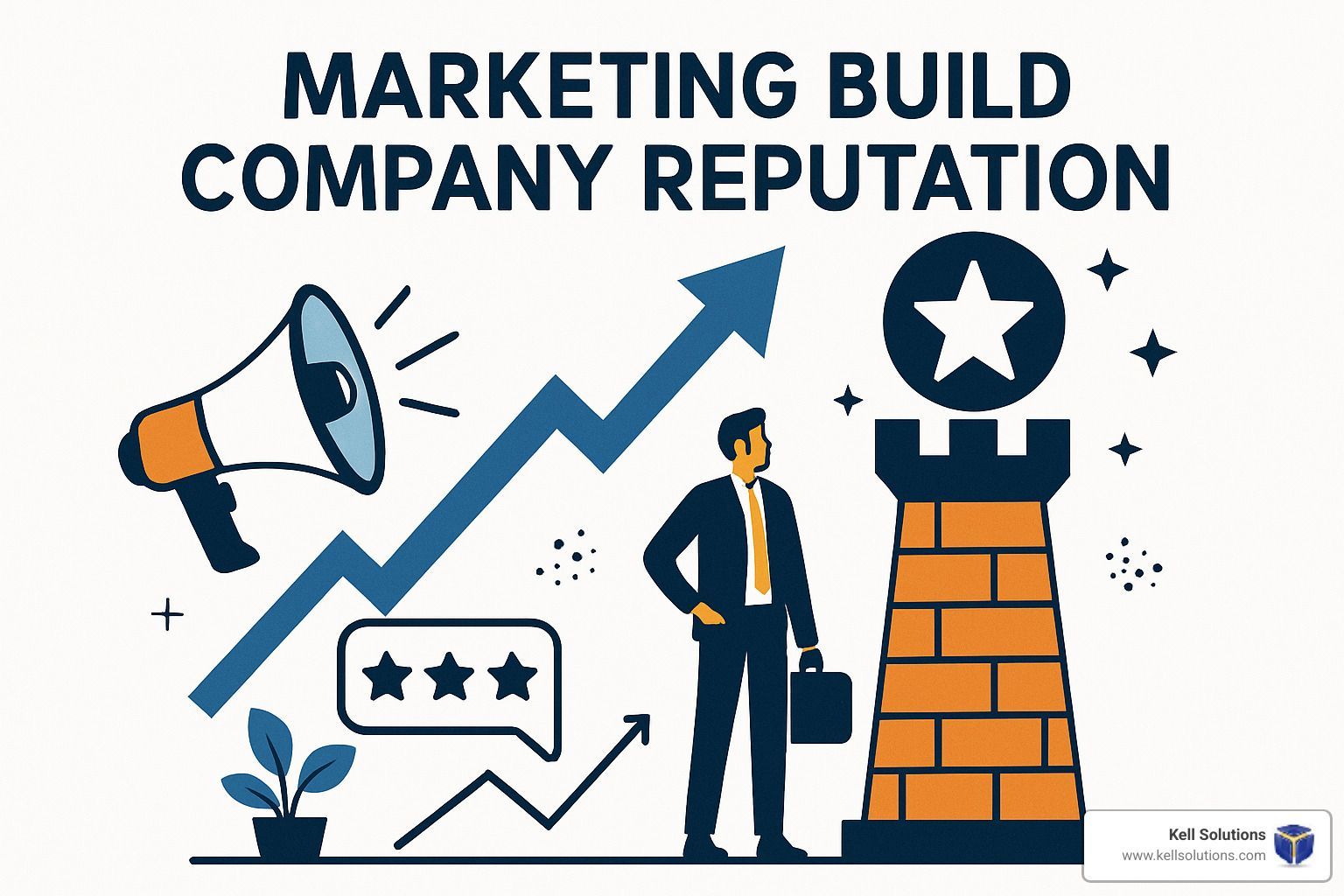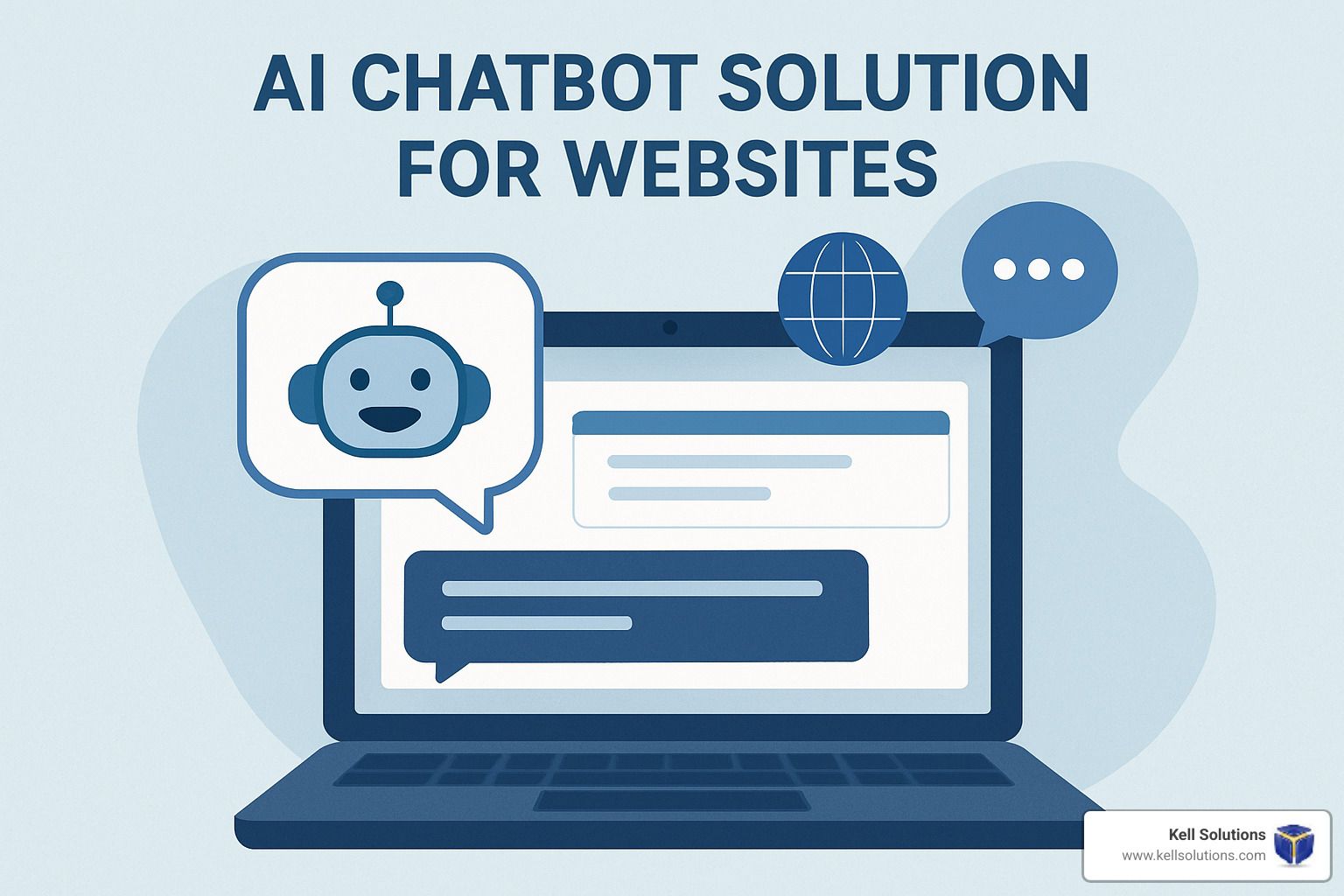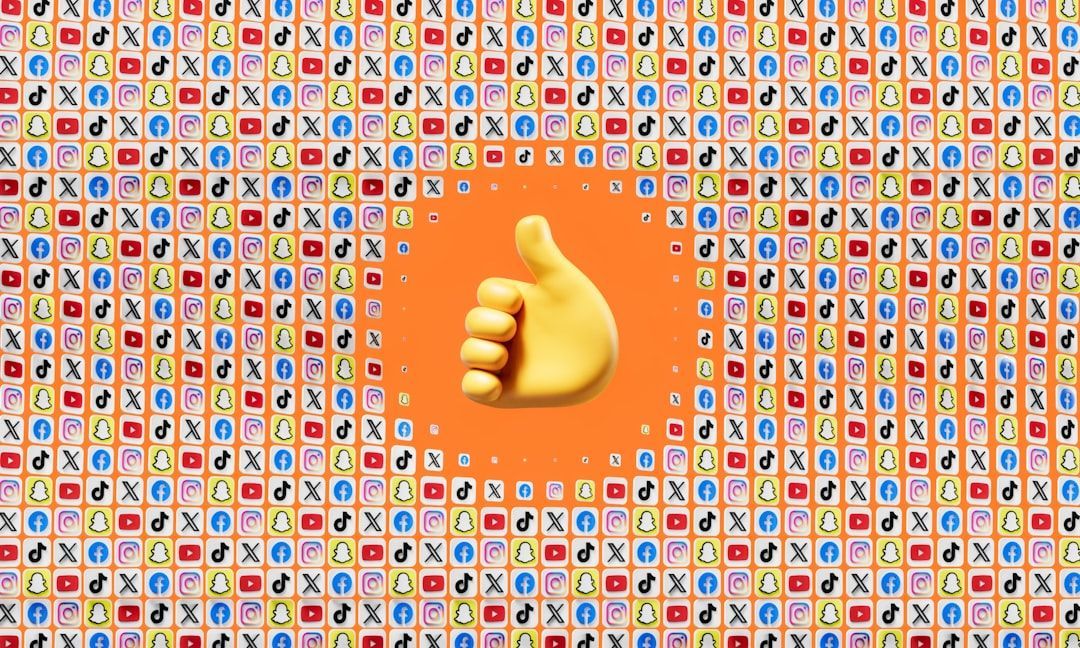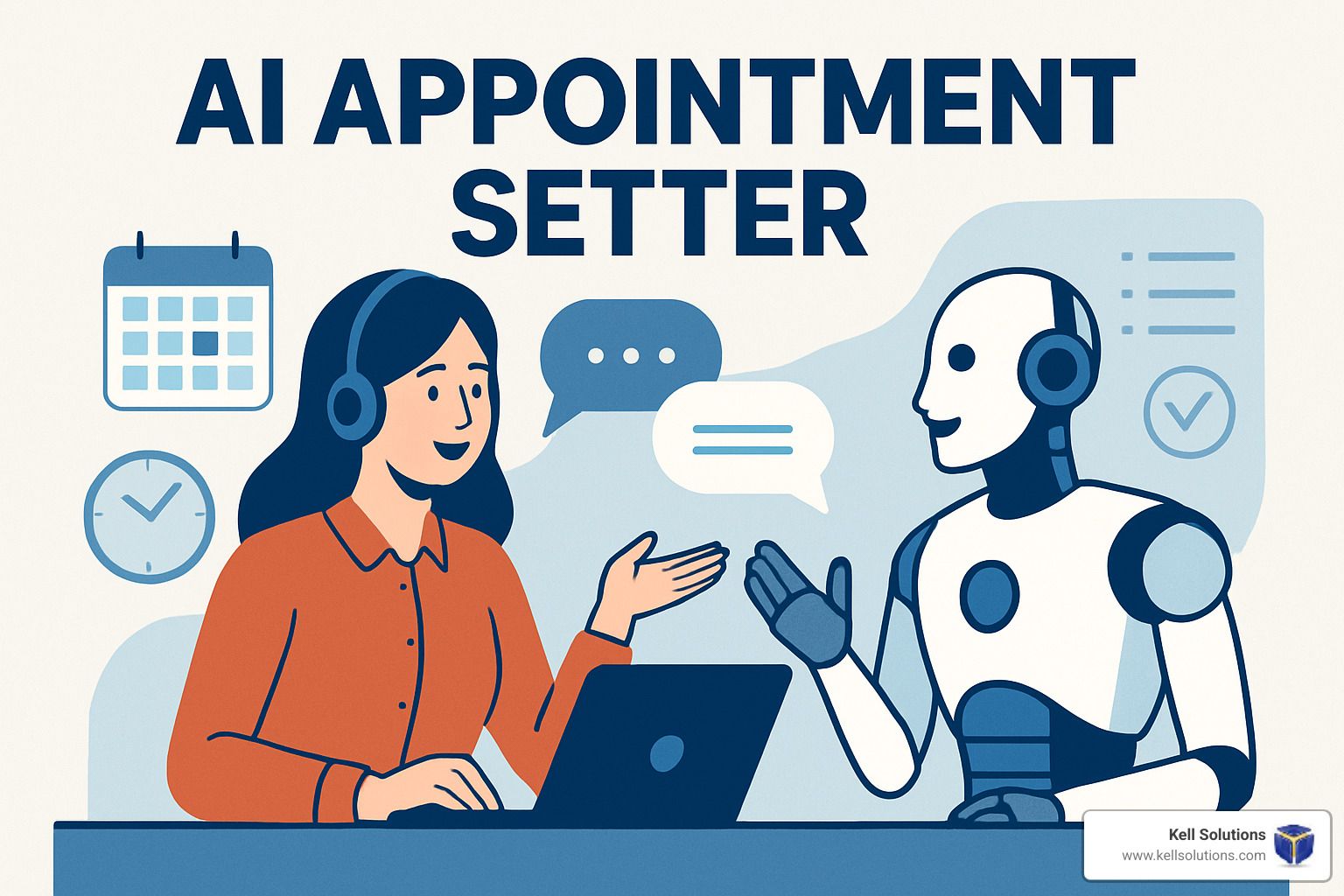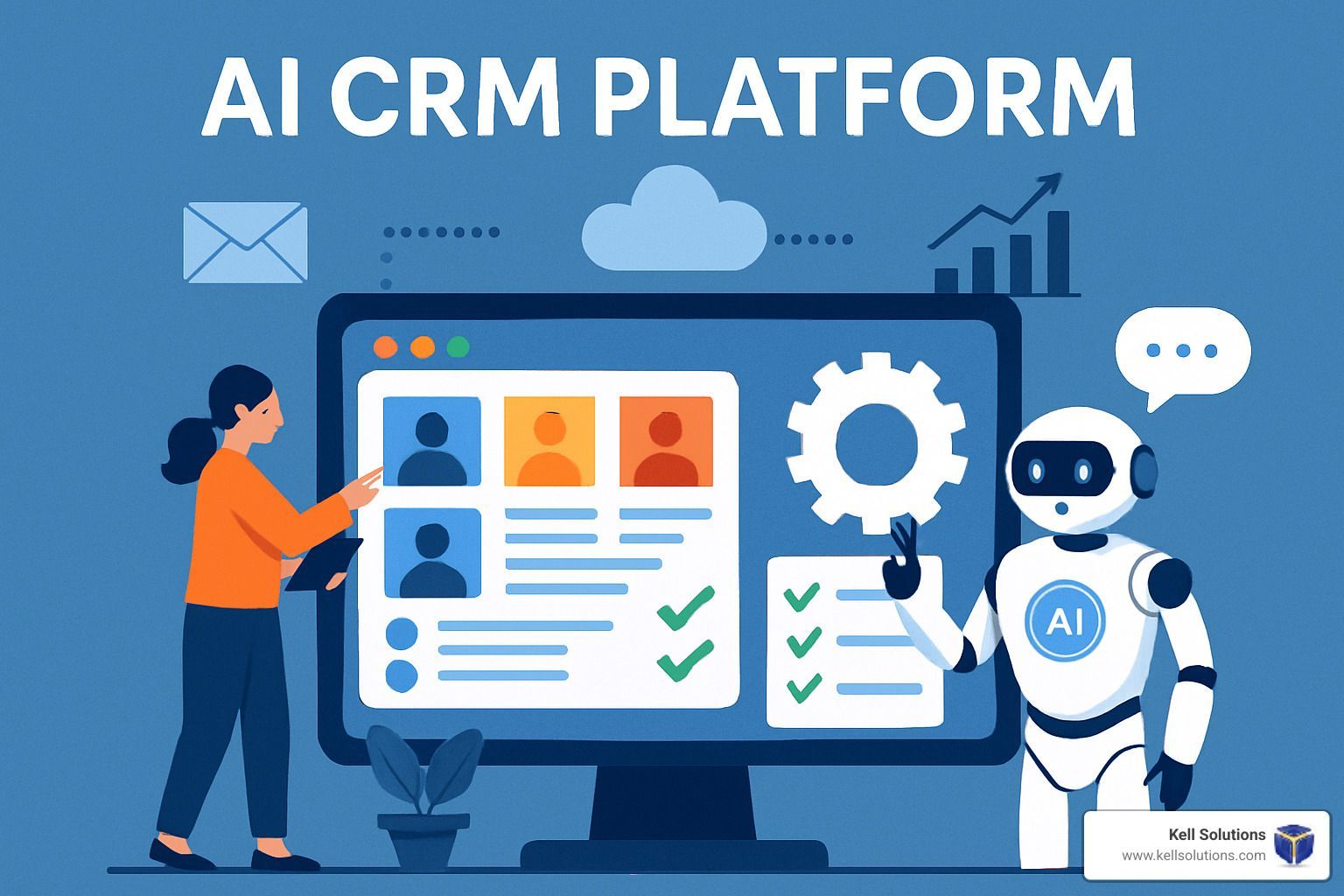AI Insights Optimize Advertising Campaigns: Best Strategies & Tips
Maximizing ROI on Marketing Spend

Key Takeaways
- AI-powered advertising campaigns deliver up to 47% higher ROI and 63% faster decision-making compared to traditional methods, revolutionizing how brands allocate marketing budgets.
- Predictive analytics can forecast campaign outcomes with 89% accuracy up to 45 days before launch, allowing for strategic optimization before spending begins.
- Dynamic Creative Optimization (DCO) powered by AI can generate thousands of personalized ad variants, increasing engagement rates by up to 72% as seen in Coca-Cola's AR campaigns.
- Implementing ethical AI frameworks that prioritize contextual intelligence and consent-aware personalization creates more effective campaigns while respecting user privacy.
- The integration of AI technologies, business automation with AI, across marketing operations has led to 4.8x higher campaign profitability and 92% faster creative iteration cycles for leading brands.
The digital advertising landscape has transformed from educated guesswork into a precision-driven science. Today's marketers are leveraging artificial intelligence to make smarter decisions, optimize budgets in real-time, and create hyper-personalized experiences that connect with audiences on a deeper level. AdaptAI Solutions has been at the forefront of this revolution, helping brands implement these technologies to achieve unprecedented campaign performance while maintaining brand authenticity.
With the right AI strategies, advertisers are now able to predict outcomes, automate tedious optimization tasks, and uncover insights that would be impossible to detect manually. The results speak for themselves: 47% higher ROI and decision-making that's 63% faster than traditional methods, according to McKinsey's latest Digital Advertising Report.
Article-at-a-Glance: Transform Your Ad Performance with AI
AI is reshaping how campaigns are conceptualized, executed, and optimized across every touchpoint in the customer journey. From automated bidding algorithms that make split-second decisions to generative AI that creates thousands of ad variants, these technologies are no longer optional for competitive brands. The integration of machine learning into marketing workflows has become the dividing line between campaigns that soar and those that struggle to perform.
The most successful organizations are those that view AI not as a replacement for human creativity but as an amplifier that handles computational heavy lifting while strategists focus on emotional storytelling and brand positioning. This synergy between human intuition and machine precision is creating a new paradigm in advertising effectiveness.
How AI Is Revolutionizing Advertising ROI
The fundamental shift in advertising performance comes from AI's ability to process and act on massive datasets in real-time. Modern campaigns generate terabytes of performance data that traditional analysis simply cannot process quickly enough to be actionable. AI systems can identify patterns, predict outcomes, and make adjustments automatically—often before human analysts would even recognize an issue exists.
"By 2027, enterprises using AI-driven campaign strategies will report 4.8x higher profitability and 92% faster creative iteration cycles compared to those relying on conventional methods." — IBM Watson Advertising Insights
These performance improvements aren't theoretical—they're being realized across industries. Retail brands have reduced customer acquisition costs by 28% through predictive budget allocation. Automotive companies have increased showroom visits by 31% with AI-optimized multichannel synchronization. Consumer packaged goods manufacturers have achieved 72% higher engagement through AI-generated personalized creative.
Critical AI Technologies Reshaping Campaign Performance
The AI revolution in advertising isn't driven by a single technology but rather an ecosystem of specialized tools working in concert. Each addresses specific aspects of campaign optimization, from audience targeting to creative production to real-time bidding. Understanding these technologies is essential for marketers looking to leverage AI's full potential in their advertising strategies.
AI Technology Primary Function Performance Impact Predictive Analytics Forecast campaign outcomes 89% accuracy in pre-launch predictions Real-Time Bidding AI Optimize auction participation 14M+ bid decisions per second Generative AI Create personalized content 450% increase in click-through rates Computer Vision Analyze visual engagement 62% better emotional resonance This technological convergence has created unprecedented opportunities for advertisers to optimize every aspect of their campaigns, from the initial creative concept through to the final conversion. Brands that integrate multiple AI technologies across their marketing stack are seeing multiplicative benefits rather than merely additive ones.
Predictive Analytics: The Engine Behind 89% More Accurate Forecasting
Predictive analytics has become the cornerstone of high-performing advertising campaigns, enabling marketers to forecast outcomes with remarkable precision. These systems analyze 142+ variables—ranging from seasonal search trends to macroeconomic indicators—to model potential campaign performance before a single dollar is spent. This predictive capability allows for pre-emptive optimization rather than reactive adjustments.
IBM Watson Advertising's platform, for example, can predict campaign performance with 89% accuracy up to 45 days before launch. This foresight allows marketing teams to test multiple strategies in simulation, identifying potential weaknesses and opportunities without the cost of real-world trial and error. The result is campaigns that begin already optimized, with continuous improvement from that advanced starting point.
Real-Time Bidding AI: Making 14M+ Decisions Per Second
In the programmatic advertising ecosystem, AI-powered bidding systems have completely revolutionized how ad inventory is purchased. Google's Real-Time Bidding AI processes over 14 million bids per second while maintaining just 2 milliseconds of latency. This microsecond decision-making allows for unprecedented precision in determining the exact value of each impression based on user intent, context, and conversion probability.
These systems continuously learn from performance data, automatically adjusting bidding strategies across channels to maximize ROI. They can detect subtle patterns indicating high-value audiences and shift budget allocation instantly to capitalize on emerging opportunities. The result is dramatically more efficient ad spend, with some platforms reducing cost-per-acquisition by up to 37% while simultaneously increasing conversion volume.
Generative AI: Creating Thousands of Personalized Ad Variants
The creative limitations of traditional advertising have been shattered by generative AI tools that can produce thousands of personalized ad variants at scale. These systems analyze user data, behavioral patterns, and contextual signals to generate tailored messaging, imagery, AI Personalization Tools and offers that resonate with individual preferences. A single creative concept can now be automatically adapted into hundreds of variations optimized for different audience segments, platforms, and moments in the customer journey.
Brands implementing AI-generated creative have reported reducing production time from weeks to hours while achieving significantly higher engagement rates. Coca-Cola's implementation of generative AI for AR campaigns delivered a remarkable 72% lift in engagement, while fashion retailer ASOS cut creative production time from three weeks to just 48 hours while maintaining brand consistency across all variations.
Computer Vision: Reading Consumer Emotional Responses
Advanced computer vision algorithms have introduced a new dimension to advertising optimization: emotional response analysis. These systems can analyze facial expressions, eye movements, and engagement patterns to determine how audiences are emotionally responding to creative elements. This emotional intelligence allows for unprecedented insight into which aspects of an advertisement create genuine connection versus mere attention.
Brands testing creative concepts with computer vision analysis have achieved 62% better emotional resonance in their final campaigns. By understanding precisely which visual elements, messaging approaches, and storytelling techniques evoke the desired emotional response, advertisers can craft experiences that form deeper connections with their audiences.
5 Game-Changing AI Strategies for Ad Optimization
Implementing AI in advertising requires strategic integration rather than piecemeal adoption. The most successful organizations are applying these technologies systematically across their campaign development and optimization processes. These five strategies represent the most impactful approaches being deployed by leading advertisers to achieve breakthrough performance.
1. Cross-Channel Attribution Modeling
Traditional attribution models struggle with the complexity of modern customer journeys that span dozens of touchpoints across multiple devices. AI-powered attribution systems track these complex paths using machine learning to determine the true impact of each interaction on conversion probability. Unlike rules-based models, these systems continuously adapt to changing consumer behaviors, uncovering hidden influence patterns that static models miss.
The evolution of AI attribution has reached an inflection point, with 84% of enterprises now leveraging cross-channel orchestration platforms to deliver seamless customer experiences. These systems unify data streams from 14+ touchpoints and automatically optimize channel mix based on performance patterns. Marketers implementing these technologies report 39% more accurate budget allocation and a 27% increase in overall campaign performance.
2. Dynamic Creative Optimization
Dynamic Creative Optimization (DCO) represents one of the most transformative applications of AI in advertising. These systems automatically assemble and test thousands of creative combinations—adjusting headlines, images, CTAs, and offers based on real-time performance data. The most sophisticated DCO platforms can now integrate external factors like weather patterns, local events, and even stock market movements to deliver perfectly contextualized messaging. The next frontier in AI personalization lies in dynamic creative optimization, where machine learning adapts to user preferences.
By 2026, industry analysts predict 78% of enterprises will deploy AI-powered DCO tools as core components of their marketing stacks. This adoption is driven by the need for scalable personalization and the demonstrated performance advantages: campaigns using advanced DCO have shown conversion rate improvements of 30-300% compared to static creative approaches.
3. Automated Budget Reallocation
AI has transformed budget management from a periodic, manual process to a continuous optimization cycle. Modern AI platforms analyze performance patterns across channels, audiences, and creative variations in real-time, automatically shifting investment toward the highest-performing combinations. These systems can detect subtle signals indicating changes in performance trajectory before they become obvious in top-line metrics.
The impact of automated budget optimization is particularly evident in multi-channel campaigns. Volkswagen's implementation of AI budget allocation resulted in 31% higher showroom visits by automatically synchronizing CTV and display ad spending based on engagement patterns. Similarly, retail brands have reduced customer acquisition costs by nearly a third through predictive budget shifts that capitalize on emerging high-value audience segments.
4. Micro-Audience Segmentation
Traditional demographic segmentation has given way to AI-powered behavioral clustering that identifies nuanced audience segments based on patterns invisible to human analysis. These systems can detect cohorts with similar conversion propensities despite having different demographic profiles, enabling more precise targeting without relying on personal identifiers. The most advanced platforms continuously refine these segments as new data becomes available, creating an evolving understanding of audience composition.
Marketers leveraging AI-driven micro-segmentation have achieved remarkable improvements in campaign efficiency. Financial services firms have seen 42% higher application completion rates through custom messaging for behavior-based segments. Travel companies have increased booking values by 28% by identifying and targeting micro-segments with specific destination preferences and spending patterns.
5. Fraud Prevention Through Pattern Recognition
AI personalization tools now integrate fraud detection as a native capability, addressing the $81B global ad fraud problem while maintaining campaign integrity. These systems can identify suspicious patterns indicative of bot traffic, click farms, and impression fraud by analyzing behavioral signals at millisecond intervals. Unlike traditional fraud detection that operates on predefined rules, AI solutions continuously evolve their understanding of fraud signatures to catch even sophisticated new schemes.
The ROI of AI-powered fraud prevention extends beyond simply eliminating wasted impressions. By ensuring that campaigns reach genuine human audiences, these systems dramatically improve overall campaign performance metrics. Brands implementing advanced fraud prevention have reported 22% higher conversion rates and 17% lower overall acquisition costs once fraudulent traffic is eliminated from their marketing ecosystems.
The Ethical AI Framework for More Effective Campaigns
Ethical considerations aren't just regulatory requirements—they're foundational elements of effective AI-powered advertising. The most successful implementations balance powerful personalization capabilities with responsible data practices, creating sustainable competitive advantages while building consumer trust. This approach has proven particularly valuable as privacy regulations continue to evolve globally.
Forward-thinking organizations are implementing comprehensive ethical AI frameworks that address privacy concerns while maintaining personalization capabilities. These frameworks typically address three core dimensions: contextual intelligence, consent-aware personalization, and bias mitigation. Brands that lead in these areas are finding they can achieve superior performance without compromising ethical standards.
Contextual Intelligence Without Cookies
The deprecation of third-party cookies has accelerated the development of contextual AI systems that understand content meaning rather than relying on user tracking. IBM's Watson Advertising delivers ads aligned with article tone and sentiment (such as upbeat creatives alongside positive news stories), achieving relevance without personal data. This approach respects user privacy while maintaining or even improving targeting effectiveness.
Contextual AI systems analyze hundreds of signals beyond just keywords, including semantic meaning, emotional valence, and topic relationships. The New York Times' Perspective targeting system uses natural language processing to match advertisements with content that creates complementary emotional states, resulting in 40% higher brand recall and 30% better purchase intent compared to traditional targeting methods.
Consent-Aware Personalization
Leading platforms now incorporate consent awareness directly into their optimization algorithms, automatically adjusting personalization depth based on user permissions. OneTrust's AI system intelligently varies the degree of personalization based on explicit consent levels, creating tiered experiences that respect individual privacy choices while maximizing performance within those constraints. This approach has proven particularly effective in high-regulation markets like the European Union.
Consent-aware systems have demonstrated that respect for user preferences can coexist with strong performance. Campaigns using these technologies have achieved 450% higher click-through rates by delivering emotion-tuned messaging that respects privacy boundaries. This approach builds consumer trust while still delivering the personalization benefits that drive advertising effectiveness.
Bias Mitigation Protocols
AI systems inevitably reflect biases present in their training data, potentially leading to unfair distribution of advertising opportunities. Advanced platforms now incorporate bias detection and mitigation protocols that identify and correct these imbalances before they impact campaign delivery. These systems continuously monitor for demographic skews in targeting, bidding, and creative selection, automatically implementing corrective measures when biases are detected.
Unilever has pioneered the use of bias-aware AI in its global advertising operations, implementing systems that ensure equitable creative testing and audience targeting across diverse populations. This approach has not only aligned with the company's social responsibility goals but has also expanded their effective audience reach by 34%, uncovering valuable customer segments that biased systems might have overlooked.
Implementation Roadmap: Getting Started with AI Advertising
Implementing AI advertising technologies requires a structured approach that balances quick wins with long-term capability building. Organizations that succeed in this transformation typically follow a phased implementation strategy that progressively deepens AI integration across their marketing operations. This roadmap provides a proven path to AI adoption that minimizes disruption while maximizing performance gains.
Phase 1: Creative Asset Preparation
The foundation of successful AI-powered advertising is a robust library of modular creative assets designed for dynamic assembly. This includes developing flexible templates with clearly defined variables that AI systems can manipulate—headline options, image variations, call-to-action alternatives, and offer structures. Organizations should also establish metadata standards that help AI systems understand the emotional tone, messaging intent, and audience suitability of each creative element.
Leading brands typically begin with a creative audit that identifies which existing assets can be adapted for dynamic use and where new production is needed. This phase also includes defining the boundaries of acceptable creative variation to ensure brand consistency while allowing AI systems sufficient flexibility to optimize for performance. Companies that invest appropriately in this foundational work report 3.2x better results from their AI implementations compared to those who rush this critical preparation phase.
Phase 2: Data Integration
Effective AI advertising requires consolidated access to performance data across channels, campaigns, and time periods. This phase focuses on creating unified data streams that connect advertising platforms, analytics systems, CRM databases, and other relevant data sources. The goal is to provide AI systems with a comprehensive view of customer interactions and campaign performance that enables accurate pattern recognition and prediction.
Organizations should prioritize establishing clean data pipelines with consistent naming conventions, meaningful taxonomies, and appropriate normalization across sources. This infrastructure work, while less visible than creative production, often determines the ultimate ceiling of AI performance. Brands that invest in robust data integration report 47% better AI optimization results than those working with fragmented or inconsistent data sources.
Phase 3: Testing & Optimization
The final implementation phase focuses on progressive experimentation to refine AI performance for your specific business context. This typically begins with controlled A/B testing between AI and human-optimized campaign elements, establishing baseline performance differences. Organizations then gradually expand AI control across more campaign dimensions while continuously monitoring results and refining parameters.
Successful implementations maintain a portfolio approach to AI adoption, running simultaneous tests across different campaigns, channels, and audience segments to identify where AI delivers the strongest advantages. This methodical expansion allows for continuous learning while managing risk. Companies following this disciplined testing approach typically achieve full implementation 40% faster than those attempting immediate enterprise-wide deployment.
Top AI Advertising Tools Worth Your Investment
The AI advertising technology landscape continues to evolve rapidly, with platforms offering increasingly specialized capabilities. Selecting the right tools requires matching platform strengths to your specific marketing objectives, organizational capabilities, and budget constraints. The most effective advertising technology stacks typically combine multiple complementary solutions rather than seeking a single platform for all needs.
Enterprise-Level Solutions
Large organizations with complex multichannel advertising programs typically benefit from comprehensive AI platforms that offer end-to-end capabilities. IBM Watson Advertising provides industry-leading predictive analytics with 89% pre-launch accuracy and advanced fraud prevention. Adobe Sensei delivers unmatched creative optimization through its integration with Creative Cloud, reducing production time by up to 80%. Salesforce Einstein offers superior customer journey orchestration, connecting advertising performance directly to CRM outcomes for closed-loop optimization.
These enterprise platforms require significant investment but deliver corresponding value through their comprehensive capabilities and seamless integration across marketing functions. Organizations implementing these solutions report average efficiency improvements of 42% and performance gains of 31% within the first year of adoption. The total cost of ownership is further justified through reduced need for multiple point solutions and associated integration challenges.
Mid-Market Platforms
Mid-sized organizations often find the sweet spot in specialized AI platforms that excel in specific high-impact areas. Albert offers autonomous campaign management with particularly strong cross-channel budget optimization, achieving 31% performance improvements for mid-market retailers. Persado provides AI-generated messaging optimization that has delivered 450% higher engagement rates through emotional intelligence algorithms. Pattern89 specializes in creative prediction, helping brands identify winning visual and copy elements before campaigns launch.
These focused platforms typically require less implementation effort than enterprise solutions while still delivering substantial performance improvements in their specialized domains. Organizations at this level often create powerful AI capabilities by strategically combining 2-3 complementary specialized platforms rather than attempting to build a comprehensive solution. This approach balances capability depth with management complexity and total investment.
Budget-Friendly Options for Small Businesses
Small businesses can now access powerful AI advertising capabilities through platforms specifically designed for their needs and budget constraints. Adzooma provides automated optimization across Google, Facebook, and Microsoft advertising with a simple interface requiring minimal expertise. Lately offers AI-powered social media advertising with content generation capabilities at accessible price points. WordStream delivers algorithmic optimization of search campaigns with actionable recommendations rather than full automation, ideal for teams that want AI assistance while maintaining direct control.
Measuring Success: Key Metrics for AI-Enhanced Campaigns
- Algorithm Confidence Score: Measures the AI system's predictive accuracy over time
- Creative Element Performance: Tracks which components (headlines, images, CTAs) drive engagement
- Automation Efficiency Ratio: Calculates time/cost savings from automated processes
- Data Quality Index: Assesses the completeness and reliability of input data
- Learning Curve Acceleration: Measures how quickly the AI system improves performance
Evaluating AI-enhanced advertising requires expanding beyond traditional campaign metrics to include measures of the AI system's effectiveness itself. This dual measurement approach helps organizations understand not just whether performance is improving, but why, enabling more strategic refinement of AI parameters. The most sophisticated organizations are implementing AI-specific KPI frameworks that track both business outcomes and system capabilities.
Effective measurement begins with establishing clear baseline metrics before AI implementation to enable accurate before-and-after comparison. Organizations should also segment performance analysis to identify which campaign elements benefit most from AI optimization, allowing for targeted expansion of successful approaches. This nuanced measurement strategy helps prevent the common pitfall of attributing all performance changes to AI when other factors may be involved.
Leading organizations are also implementing progressive learning metrics that evaluate how quickly AI systems improve their performance over time. These learning velocity measurements help predict future ROI and identify opportunities to accelerate AI capability development through additional data sources or parameter adjustments. This forward-looking measurement approach transforms analytics from descriptive to predictive, supporting more strategic AI investment decisions.
Beyond Impressions: AI-Specific Performance Indicators
Traditional advertising metrics like impressions, clicks, and conversions remain important but insufficient for fully evaluating AI-powered campaigns. Advanced organizations are supplementing these with AI-specific performance indicators that provide deeper insight into system performance. Algorithm confidence scores measure how accurately the system predicts outcomes before they occur, with higher scores indicating more reliable optimization. Creative element performance analytics break down exactly which components of dynamically assembled ads drive engagement, enabling more precise creative development.
The most valuable AI-specific metrics often focus on learning efficiency—how quickly systems improve their performance with additional data. High-performing AI implementations typically show logarithmic improvement curves, with rapid initial gains followed by more incremental advances as optimization opportunities are identified and exploited. Organizations that track these learning patterns can better forecast future performance and identify when systems may require additional training data or parameter adjustments to maintain their improvement trajectory.
ROI Calculation Methods for AI Implementation
Calculating the true ROI of AI advertising technologies requires a comprehensive approach that accounts for both direct performance improvements and operational efficiencies. The most accurate models include four key components: performance lift (improved ROAS across campaigns), operational savings (reduced manual optimization time), opportunity costs (competitive advantage gained or lost), and implementation investments (technology, training, and data preparation). Leading organizations are developing sophisticated ROI models that track these factors across multiple time horizons, recognizing that AI benefits typically compound over time as systems accumulate more training data and optimization experience.
Future-Proof Your Ad Strategy with AI Integration
The advertising landscape continues to evolve at an accelerating pace, with emerging technologies, changing privacy regulations, and shifting consumer expectations creating continuous disruption. Organizations that integrate AI capabilities throughout their advertising operations develop an inherent adaptability that transforms these challenges into opportunities. By implementing systems that continuously learn and evolve, advertisers can create sustainable competitive advantages that persist through market changes. The future belongs to organizations that view AI not as a tactical tool but as a strategic capability that enables unprecedented responsiveness to changing conditions and customer needs.
Frequently Asked Questions
As organizations explore AI advertising technologies, certain questions consistently arise regarding implementation requirements, timeframes, and applicability across business contexts. Understanding these common concerns helps teams set realistic expectations and develop appropriate adoption strategies. The following responses address the most frequently asked questions based on real-world implementation experiences across hundreds of organizations.
These insights reflect the collective experience of organizations at various stages of AI adoption, from initial exploration to advanced implementation. While specific answers will vary based on organizational context, these guidelines provide a realistic framework for planning and executing AI advertising initiatives.
How much does it cost to implement AI in advertising campaigns?
Implementation costs vary significantly based on organizational size, campaign complexity, and existing technology infrastructure. Small businesses can access AI-powered optimization tools starting around $200-500 monthly through SaaS platforms that offer templated solutions with minimal customization. Mid-market implementations typically require investments of $2,000-10,000 monthly for more sophisticated platforms plus initial integration costs of $5,000-25,000 depending on data complexity. Enterprise-level implementations with custom models and comprehensive capabilities generally involve platform investments of $10,000-50,000 monthly plus implementation projects ranging from $50,000-250,000.
Most organizations find that AI implementation delivers positive ROI within 3-6 months through performance improvements and operational efficiencies. The key to cost-effective implementation is starting with focused applications that address specific high-value optimization opportunities rather than attempting comprehensive transformation immediately. This progressive approach allows organizations to fund expanded AI capabilities through the performance gains of initial implementations.
Do I need a data science team to use AI advertising tools?
Modern AI advertising platforms are increasingly designed for use by marketing professionals rather than data scientists. Most SaaS solutions provide intuitive interfaces that abstract the underlying complexity, allowing marketers to leverage AI capabilities without specialized technical expertise. These platforms handle the mathematical complexity internally while providing business-friendly controls for setting objectives, constraints, and parameters. Organizations can achieve significant performance improvements using these accessible tools without dedicated data science resources.
How long does it take to see results from AI optimization?
Initial performance improvements typically emerge within 2-4 weeks as AI systems begin learning from campaign data, with more substantial gains accumulating over 3-6 months as the systems refine their understanding of audience responses and optimization opportunities. The timeline varies based on several factors: data volume (campaigns with higher impression and conversion volumes provide more learning opportunities), implementation scope (narrower initial focus accelerates visible results), and seasonal factors (high-activity periods provide more training data). Organizations can accelerate results by beginning with focused applications in high-volume campaigns while ensuring proper tracking is in place to capture comprehensive performance data.
Can AI advertising work for small local businesses?
Absolutely—in fact, small local businesses often see proportionally larger performance gains from AI implementation due to previous optimization limitations. Cloud-based platforms now offer sophisticated capabilities at accessible price points specifically designed for local business needs. These solutions typically focus on optimizing ad spend across Google, Facebook, and other platforms frequented by local consumers, automatically adjusting targeting and bidding based on performance patterns. Local businesses with limited marketing teams benefit particularly from the time savings of automated optimization, allowing them to focus on customer relationships and business operations rather than manual campaign adjustments.
What privacy regulations should I be aware of when using AI for personalization?
Key regulations include GDPR (European Union), CCPA/CPRA (California), VCDPA (Virginia), CPA (Colorado), and CTDPA (Connecticut), along with emerging legislation in numerous other jurisdictions. These regulations share common principles regarding consent, transparency, data minimization, and user control, though specific requirements vary. Organizations should implement privacy-by-design approaches that incorporate regulatory compliance directly into AI systems rather than treating it as a separate consideration. This includes implementing consent management platforms, data mapping, preference centers, and algorithmic accountability measures.
The regulatory landscape continues to evolve, making adaptable compliance frameworks essential. Organizations should focus on implementing systems that can adjust to changing requirements rather than building solutions narrowly tailored to current regulations. Privacy-enhancing technologies like federated learning, differential privacy, and on-device processing are increasingly valuable in creating personalization capabilities that function effectively within regulatory constraints.


Orange County HVAC Google AI Overview Domination: 7 Proven Strategies to Capture Featured AI Results





